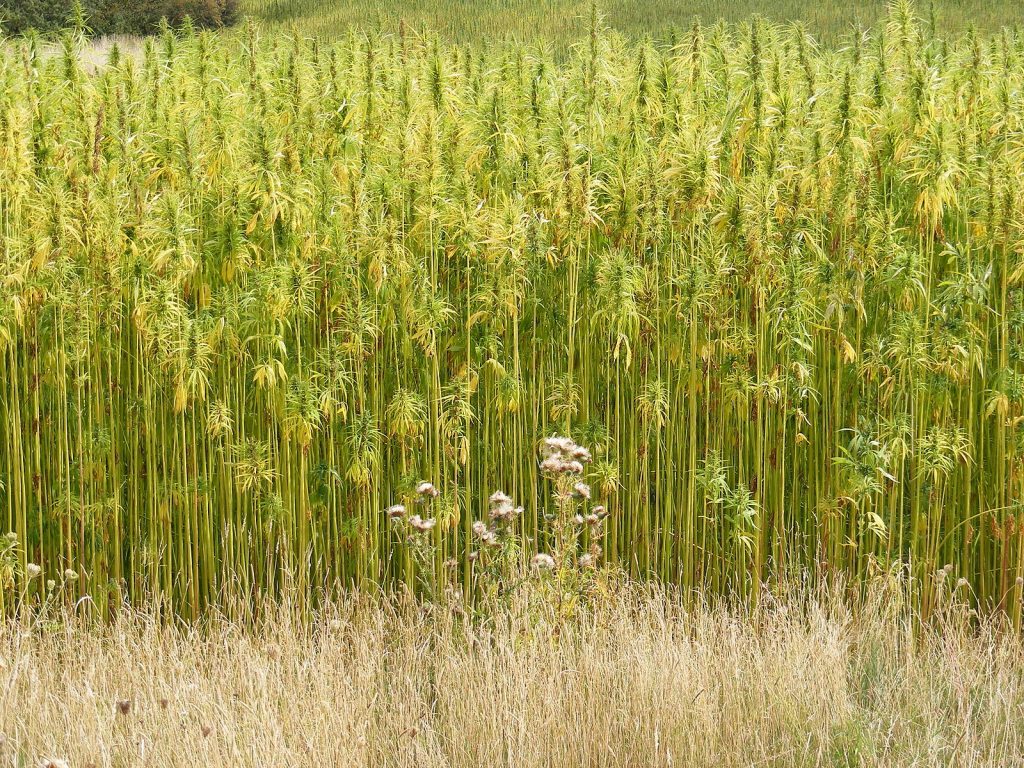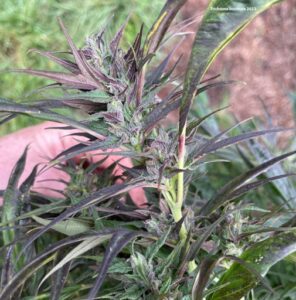When will my hippie hemp clothing make it to the runway?
Do you remember that hippie in high school who was all about peace, love, and “plants”?
Well, that was definitely me. Back then I was a hippie wannabe since this era was well beyond the real hippie movement in the mid-sixties. I had dreads and listened to reggae and old-school rock-n-roll (Thank you Janis Joplin, Jim Morrison, Bob Marley, Jimmy Hendrix, and Jerry Garcia for the timeless tunes). I hung psychedelic tapestries on the wall and shopped at the local bohemian store in my hometown in downtown Asheville, which is where I came across my first hemp apparel. The classic Mexican Baja Jacket to be exact. It amazed me how comfortable and warm this jacket was. To be honest, I totally rocked it and so did my hippie friends.

I never thought about the materials my clothes were made of before that point. I knew that hemp was a fiber for making rope and chord because I wore handmade hemp necklaces with the glass/stone pendants to compliment my Baja jacket, and I understood that hemp was like weed, but that it couldn’t get you high. However, before this point in my life, I had no idea hemp could be made into clothing.
I wondered why there wasn’t more hemp clothing on the market. Perhaps hemp clothing couldn’t be made less.. Itchy… like the modern Baja hoodie and that’s why it isn’t as mainstream?
Intrigued by what I thought to be a newfound material, I began searching the interwebs for more of it. Sadly, I came upon a lot of dead ends and couldn’t find much about hemp clothing. At the time, I didn’t know that this plant used to make my hippie clothes was actually illegal to grow in the US. How strange it was to find out that hemp was produced in other countries, then shipped to America.
Now that I am older, looking back at the hippie clothing gives me a deep and somewhat disturbing realization… perhaps hemp hasn’t made it to mainstream fashion due to the stigmatization of cannabis from Reefer Madness. The hippies with their long hair, tie-dye t-shirt, smoking that “wacky tobaccy”, are obviously the only people who would wear hemp right?
Wrong.
Through my research, I found some interesting facts revolving around traditional hemp clothing that I am excited to share with you!
Traditional Hemp Fiber
In China, people have been cultivating hemp as far back as the Sung Dynasty during 500AD. There was even a Chinese pharmacological book written in 2500 B.C. that mentions cannabis. For me, it was hard to imagine exactly how people accomplished making colorful, cloth-like fibers from a plant, with minimal tools.
Women of the Hmong tribe in the Sapa District of Northwest Vietnam carry the tradition of handcrafting hemp clothing and are amongst the few who continue this “old way” of processing hemp. The women of this tribe cultivate hemp for utility, ritualistic ceremonies, and spiritual practice. Shu Tan (pictured below) is the founder and director of Sapa O’Chau and shares her people’s traditions. She documents the step-by-step process for making hemp fiber without the assistance of modern technology in this video.

www.ttgasia.com/2017/08/11/shu-tan-founder-and-director-sapa-ochau/
They wear hemp clothing during significant events like childbirth and weddings. They are even buried in hemp on purpose to be sure the fibers return to the earth along with their bodies. Their clothing must biodegrade with their physical form so the spirit may continue to the afterlife. The Hmong style of weaving hemp is excruciatingly long and extremely labor-intensive but the process brings forth incredible art in the form of clothes. The women of this district are keeping the style of producing hemp fiber alive so their children will know their traditions and the knowledge of their methods is not lost.
Modern Day Hemp Processing: Is it sustainable?
The traditional principles for processing hemp slightly carry over into the modern-day, but instead of using the raw power of human hands, hemp is processed with machines. The equipment is large and expensive, and there are multiple ways to separate the bast fiber from the woody hemp core. The retting process is one way and decortication is another. Hemp Inc. does a great job explaining how a decorticator can separate the hemp stalk from the inner core in this video. There are very few processors in America who match the scale and value of Hemp Inc’s production facility. They support local hemp farmers and are moving towards the goal where 100% of their products will be made from U.S.A. grown hemp, but currently, the extreme demand for material forces them to purchase from other countries… for now. Their main focus is a highly refined hemp fiber that is used on industrial oil rigs which explain the demand (not for clothing).
It turns out that there aren’t many U.S. hemp clothing facilities in existence that make their clothing from 100% American grown hemp, at least none I have found are transparent enough to show where their hemp is harvested and manufactured. I also find that much of the hemp apparel in existence is made using the controversial viscose process, also known as Rayon. The viscose process is in question because it uses extremely harsh chemicals to break down the bast fiber. Many of the world’s manufacturers and some popular U.S. and European brands were outed in 2017 for turning a blind eye to the excess pollutants being dumped in the rivers of villages in places like India and China. Much of these pollutants have caused serious illness and deformities in the poor people who live there. Therefore, if you are using hemp clothing, please be conscious of how it’s made! Don’t believe something is sustainable just because the label says it is. In an unregulated market, you must QUESTION EVERYTHING. This is also why you shouldn’t pick a CBD product based on the marketing strategy of the brand as well.
Hemp For CBD Production
Despite the 2018 Farm Bill being signed into law, we are now approaching 2021 and have yet to see wide-scale hemp fiber farming in America. In 2018 we saw a massive increase in hemp farmers, but a majority of those folks were and still are farming for cannabidiol or CBD. The reason for this is because more money can be made from farming CBD per acre vs. farming hemp fiber per acre. Farmers all over the country dove into the CBD market full-throttle in order to hitch a ride on the rapidly growing and projected USD 13.03 billion dollar market by the year 2026. The problem is that most traditional farmers (meaning in the last seventy years, who farm soy, corn, wheat, and tobacco, etc.), had no idea how to grow good quality CBD cannabis. The outcome of this ignorance (I must remind you, DOES NOT mean stupid), is an influx of poor quality CBD rushing the market in 2019. I believe the term “snake oil” was thrown around quite frequently since you could buy “CBD Oil” from the corner gas station. The CBD market has been completely saturated, but most farmers continue to see higher profit compared to planting hemp fiber. There are plenty of consumers who have yet to jump on the CBD bandwagon, which means there is an amazing growth potential for CBD. At the CBD dispensary I manage in North Carolina, I meet new customers every day. The majority of my customers have either never tried CBD before, or decided to try it because of an advertisement saying it could help with their (insert medical condition here) and would be their saving grace, but experienced zero benefits.
The market is unregulated and free to enter with the right paperwork, which means you need to be an informed consumer. There are some excellent CBD farmers out there. When looking for a good source, stick with local, small production farms that have the most quality control. These farms should be willing to provide clear Certificates of Analysis and hopefully include terpene profiles and pesticide test results. For extracts, an RSA (residual solvent analysis) should also be available for the consumer to view.
The fact of there being a rush of CBD specific farmers means America has very few farmers growing for hemp fiber.
Fiber vs CBD:
The genetics of high CBD hemp is completely different from fiber hemp. Notice the difference between the two photos here. Observe how the top photo shows fiber hemp growing tall, skinny, and closer together, while the bottom picture shows CBD hemp that has further spacing and bushy features. Since fiber hemp doesn’t need to have cannabinoid-rich flowers, they can be grown super close together. Fiber hemp flower requires a fraction of the attention of CBD hemp, and crops can still be harvested even if they have any mold or pest issues, unlike CBD hemp.


If you grow hemp for fiber, you do not want to grow hemp for CBD at the same time. Hemp fiber is produced from both male and female plants. So, if you are a farmer that paid higher prices for feminized CBD seeds, you definitely don’t want any male fiber plants near your female CBD farm. Cannabis is anemophilous or pollinated by the wind, and pollen can be carried beyond 10 miles. If CBD hemp is pollinated, it will drastically reduce the amount of CBD it produces. This is why location means everything to a CBD farmer, but not as much to a fiber farmer. This is an advantage to farming hemp fiber over CBD, even though CBD hemp has a higher profit margin, the risk of farming hemp fiber is much lower.
Conclusion
With the lack of hemp farmers growing fiber, how will America be able to capitalize on the new trade agreement between our country and China, which specifically mentions hemp? Despite the growing demand for CBD, Americans seem less enthusiastic about switching from their traditional cotton to more sustainable hemp clothing. The United States imported around 3 million dollars in hemp fiber this year, which is actually not that much in retrospect. Texas-based company Panda Biotech donated 60 tons of hemp seed from China to interested Texan growers at the beginning of 2020 in hopes to initiate the hemp textile movement in America. Given that only 400 licenses were handed out near the beginning of the year, it’s hard to say how many official growers will produce fiber.
Hemp fiber processing requires millions in investments. With the market being where it stands today, imagine if some of the larger-scale farms (who mind you, lack the most transparency), started solely producing the easier, less meticulous hemp fiber crops, while letting small artisanal farms grow CBD hemp? Would our national hemp fiber market then be able to compete with countries that have been in the business for much longer? Could this then regulate how our cannabis medicine is produced? Perhaps it’s not the complete solution but it could be a start.
As cannabis advocates, we must band together to educate the modern clothing consumer on the benefits of switching to hemp. If more large scale American farmers grow hemp fiber rather than marijuana or CBD hemp, then the cost of these materials would become more affordable to the consumer. There needs to be clear regulation on how these products are processed, so we can avoid harming our planet more than the human industrial world already has. If we stop seeing hemp as clothes for dirty hippies and start seeing it as a sustainable clothing option for everyone, then we will see the rise of hemp fashion in the world!
Thanks for reading!



